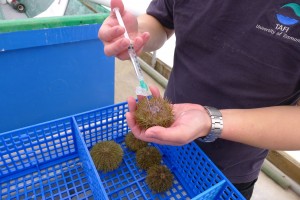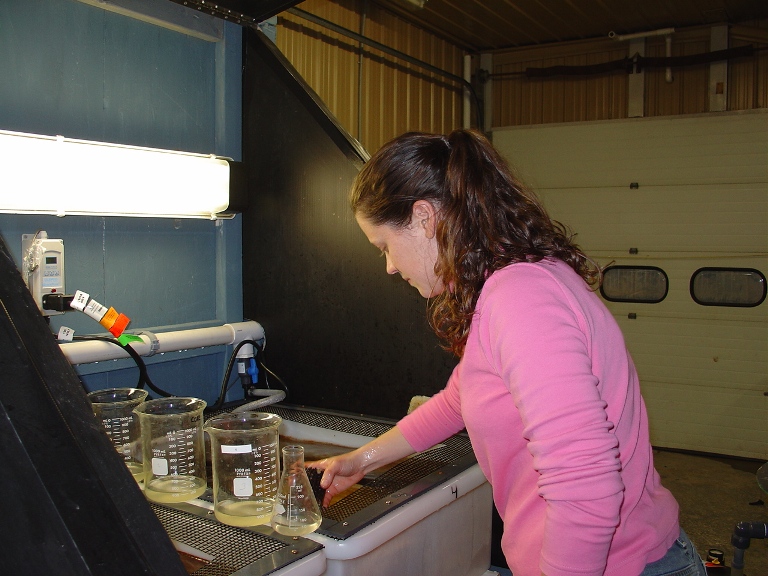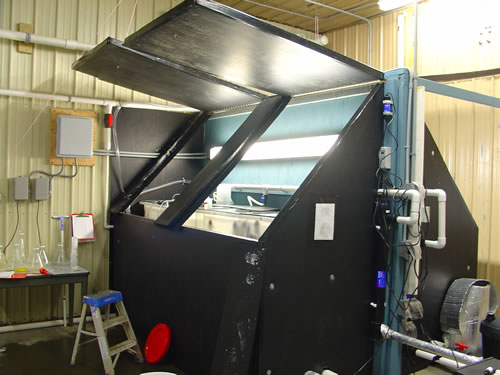Sea Urchin Broodstock Conditioning

An important step in domesticating a new species for aquaculture such as the green sea urchin is being able to control reproduction and breeding. Factors affecting maturation, gamete quality and reproductive timing must be understood in order for the organism to be readily bred and reproduced in captivity. Although it’s possible to obtain reproductive urchins from the fishery for hatchery production, this approach is limited by seasonality and access to the resource. For this project we were interested in determining whether we could use photoperiod and temperature control to enable year round spawning of green sea urchins. We compared different photoperiod and temperature regimes and measured their effect on spawning, fertilization success, and gonad index. Histology and stereology were utilized to look at gonad development at the tissue and cellular level.

Our results showed that both temperature and photoperiod cues can be used to advance reproductive timing from spring to fall, extending the period during which captive urchins remain reproductive. This is important because it means breeding populations of green sea urchins can be maintained in captivity to provide gametes over a longer season than those from the fishery. Tools such as these used for captive broodstock management are a necessary step in the domestication continuum, leading eventually to selective breeding for faster growing sea urchins that are better adapted for aquaculture. You can read about this project in our paper:

